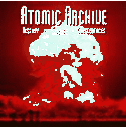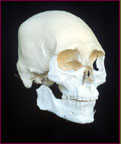 Peace
Action: the largest grassroots peace organization in the United States; works
for policy changes in Congress, state capitals, city halls and the United Nations. News
reports, fact sheets, nuclear events calendar.
Peace
Action: the largest grassroots peace organization in the United States; works
for policy changes in Congress, state capitals, city halls and the United Nations. News
reports, fact sheets, nuclear events calendar. Peace
Action: the largest grassroots peace organization in the United States; works
for policy changes in Congress, state capitals, city halls and the United Nations. News
reports, fact sheets, nuclear events calendar.
Peace
Action: the largest grassroots peace organization in the United States; works
for policy changes in Congress, state capitals, city halls and the United Nations. News
reports, fact sheets, nuclear events calendar.
 Nuclear Age Peace
Foundation: an international education and advocacy group on issues of
international peace and security; recognized by the United Nations as a Peace Messenger
Organization. It is the global contact for the Abolition 2000 campaign to eliminate
nuclear weapons. Current news and information, feature articles, free online newsletter,
nuclear age history, and a peace store.
Nuclear Age Peace
Foundation: an international education and advocacy group on issues of
international peace and security; recognized by the United Nations as a Peace Messenger
Organization. It is the global contact for the Abolition 2000 campaign to eliminate
nuclear weapons. Current news and information, feature articles, free online newsletter,
nuclear age history, and a peace store.
 Lawyers' Committee on Nuclear
Policy: a national nonprofit educational association that uses national and
international law to promote peace and disarmament. LCNP provides legal information
and analysis to policy makers, activists, and the media on disarmament, international law,
and arms control treaties. Newsletter — Bombs Away! — available online.
Lawyers' Committee on Nuclear
Policy: a national nonprofit educational association that uses national and
international law to promote peace and disarmament. LCNP provides legal information
and analysis to policy makers, activists, and the media on disarmament, international law,
and arms control treaties. Newsletter — Bombs Away! — available online.
 The
Henry L. Stimson Center: an independent, nonprofit, public policy institute
committed to finding and promoting innovative solutions to the security challenges
confronting the United States and other nations in the twenty-first century. Issues of
interest include weapons of mass destruction, missile defense, the UN and peacekeeping,
cooperative international security, and U.S. foreign policy.
The
Henry L. Stimson Center: an independent, nonprofit, public policy institute
committed to finding and promoting innovative solutions to the security challenges
confronting the United States and other nations in the twenty-first century. Issues of
interest include weapons of mass destruction, missile defense, the UN and peacekeeping,
cooperative international security, and U.S. foreign policy.
 Atomic Archive: biographies, documents, glossary,
nuclear data, nuclear test sites, timeline, references, arms control treaties,
photographs, videos, maps, reflections, nuclear fission, nuclear fusion.
Atomic Archive: biographies, documents, glossary,
nuclear data, nuclear test sites, timeline, references, arms control treaties,
photographs, videos, maps, reflections, nuclear fission, nuclear fusion.
![]() The
Nuclear Files provides comprehensive historical and biographical information
about the nuclear era as well as current information on ethical and policy problems
related to nuclear weapons, proliferation, and disarmament; nuclear energy; and nuclear
waste. More than 1,800 searchable pages. Includes a gallery of Robert Del Tredici
photographs from At Work in the Fields of the Bomb.
The
Nuclear Files provides comprehensive historical and biographical information
about the nuclear era as well as current information on ethical and policy problems
related to nuclear weapons, proliferation, and disarmament; nuclear energy; and nuclear
waste. More than 1,800 searchable pages. Includes a gallery of Robert Del Tredici
photographs from At Work in the Fields of the Bomb.
 The
Bulletin of the Atomic Scientists: an authoritative source for
information on nuclear weapons and tests, proliferation, arms control, A-bomb history, and
related national and international security issues; founded by concerned Manhattan Project
scientists in 1945 and home of the Doomsday Clock. Includes an index, by subject category,
of articles that have appeared in the magazine since 1991 and a search engine to search
past issues for any topic or keyword.
The
Bulletin of the Atomic Scientists: an authoritative source for
information on nuclear weapons and tests, proliferation, arms control, A-bomb history, and
related national and international security issues; founded by concerned Manhattan Project
scientists in 1945 and home of the Doomsday Clock. Includes an index, by subject category,
of articles that have appeared in the magazine since 1991 and a search engine to search
past issues for any topic or keyword.
![]() Nagasaki
Atomic Bomb Museum: history, photos, virtual tour, peace declaration and
education, links to related sites.
Nagasaki
Atomic Bomb Museum: history, photos, virtual tour, peace declaration and
education, links to related sites.
 Hiroshima
City homepage: city facts, history, peace site, guide to facilities, tourist
information, events. Atomic Dome world heritage site.
Hiroshima
City homepage: city facts, history, peace site, guide to facilities, tourist
information, events. Atomic Dome world heritage site.
Hiroshima Peace Memorial Museum presents the facts of the atomic bombing, with the aims of contributing to the abolition of nuclear weapons throughout the world and of promoting world peace. The museum displays photos, artifacts left by the victims, and exhibits that describe Hiroshima before and after the bombing and others on the status of the nuclear age.
 Japan Guide:
200 pages of illustrated, general information about most aspects of modern and traditional
Japan with search by subject or city. Includes travel guide with photo gallery.
Japan Guide:
200 pages of illustrated, general information about most aspects of modern and traditional
Japan with search by subject or city. Includes travel guide with photo gallery.
 USS
Arizona Memorial: The Memorial straddles the sunken hull of the battleship
USS Arizona and commemorates the December 7, 1941, Japanese attack on Pearl Harbor. The
Memorial was dedicated in 1962 and became a National Park Service area in 1980.
USS
Arizona Memorial: The Memorial straddles the sunken hull of the battleship
USS Arizona and commemorates the December 7, 1941, Japanese attack on Pearl Harbor. The
Memorial was dedicated in 1962 and became a National Park Service area in 1980.
 US Navy Historical Center:
Search site for "Pearl Harbor".
US Navy Historical Center:
Search site for "Pearl Harbor".
 The U.S. Department of
Energy's Hanford Nuclear Site,
located on the Columbia River in southeastern Washington State, was the main U.S.
plutonium production complex beginning during World War II with its creation as part of
the top-secret Manhattan Project. Currently the 560-square-mile Hanford Site is engaged in
the world's largest environmental cleanup project with the challenge of resolving many
overlapping technical, political, regulatory and cultural interests. Extensive information
on DOE and Hanford contractors, environmental restoration and waste management programs,
history and cultural resources, Hanford facts, documents, photos and maps.
The U.S. Department of
Energy's Hanford Nuclear Site,
located on the Columbia River in southeastern Washington State, was the main U.S.
plutonium production complex beginning during World War II with its creation as part of
the top-secret Manhattan Project. Currently the 560-square-mile Hanford Site is engaged in
the world's largest environmental cleanup project with the challenge of resolving many
overlapping technical, political, regulatory and cultural interests. Extensive information
on DOE and Hanford contractors, environmental restoration and waste management programs,
history and cultural resources, Hanford facts, documents, photos and maps.
 Recent Hanford news
from the Tri-City Herald.
Recent Hanford news
from the Tri-City Herald.
 B Reactor Museum
Association is a volunteer group dedicated to preservation of the historic B
Reactor at Hanford and conversion to a publicly accessible museum. B Reactor was the
world's first industrial-scale nuclear reactor, built during the World War II Manhattan
Project to produce plutonium for the Nagasaki atomic bomb. History of B Reactor, tour
information, and archive of BRMA newsletters.
B Reactor Museum
Association is a volunteer group dedicated to preservation of the historic B
Reactor at Hanford and conversion to a publicly accessible museum. B Reactor was the
world's first industrial-scale nuclear reactor, built during the World War II Manhattan
Project to produce plutonium for the Nagasaki atomic bomb. History of B Reactor, tour
information, and archive of BRMA newsletters.
B Reactor Historic American Engineering Record (2001, 191 pages, pdf file, 8.2 Mb) documents the secret construction and operation of B Reactor, the first industrial-scale plutonium production reactor built at Hanford during World War II. Includes personal remembrances of those who were there, photographs, detailed engineering drawings and information on post-war operation, including the development of tritium production for the first hydrogen bomb.
Pacific Northwest National Laboratory (PNNL) is a U.S. Department of Energy multiprogram laboratory located at the Hanford Nuclear Site. PNNL has R&D programs in energy, environment, health and safety, information technology, national security, and nuclear technology.
 "Kennewick
Man" is the name given to a 9,000-year-old human skeleton discovered in
1996 along the bank of the Columbia River in Kennewick, Washington — just a few miles
downstream from the Hanford Nuclear Site. Controversy developed almost immediately among
Native American tribes, local officials and scientists about what to do with the remains.
"Kennewick
Man" is the name given to a 9,000-year-old human skeleton discovered in
1996 along the bank of the Columbia River in Kennewick, Washington — just a few miles
downstream from the Hanford Nuclear Site. Controversy developed almost immediately among
Native American tribes, local officials and scientists about what to do with the remains.
Study revealed that Kennewick Man was apparently a warrior. A stone spear point embedded in the pelvis was overgrown with bone, indicating that Kennewick Man lived many years after the injury.
Q. What does a 9,000-year-old human skeleton have to do
with the interests of World Citizens for Peace?
A. Can humankind survive another 9,000 years with nuclear weapons?